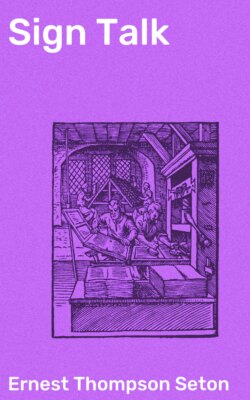Читать книгу Sign Talk - Ernest Thompson Seton - Страница 17
На сайте Литреса книга снята с продажи.
NOUNS AND PRONOUNS
ОглавлениеTable of Contents
The Nominative and Objective cases are not distinguished except by context and sequence, that is, the Nominative precedes, the Objective usually follows, the verb.
A partial exception is the first personal pronoun—the starting point of most inflection—for I, mine, and me are sometimes given as cognate but distinctive signs.
The Possessive case is usually shown by the addition of the possessive sign, equivalent to “his,” “hers,” “its,” etc. “That man’s” horse would be signed: Man, that, his horse, or Man, that there, possession, horse.
The Gender of nouns is indicated when necessary by adding the signs male or man and female or woman. Thus “A She bear” would be rendered Bear Woman.
The Number of nouns is indicated by the signs 1, 2, 3, 4, etc., many or few.
In the Personal Pronouns the plural is made by adding all to the singular. Thus Me all is the equivalent of “We,” You all of “Ye.” He all is the equivalent of “they.”
The Person by pointing to myself, to you, or to the third person. The first person is understood unless otherwise indicated.
